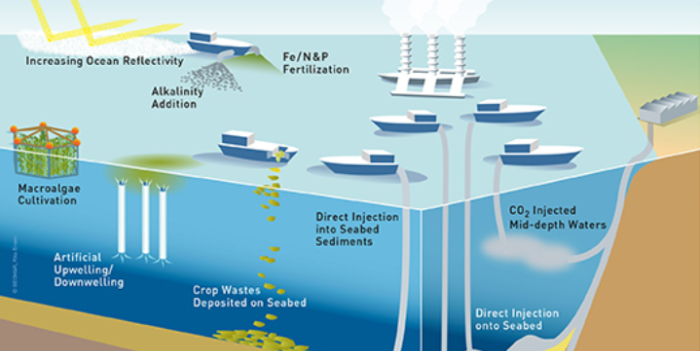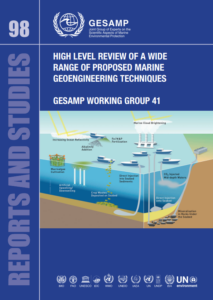Adding iron or other nutrients into the oceans to improve natural processes to draw carbon from the atmosphere and creating foams to reflect sunlight back into the atmosphere, are geoengineering practices which have been put forward as potential tools for countering climate change. However, a new report calls for precautionary approach towards these techniques which involve deliberate large-scale manipulation of the environment.
The report, published by the Joint Group of Experts on the Scientific Aspects of Marine Environmental Protection (GESAMP), notes that a coordinated framework for proposing and assessing marine geoengineering activities should be established.
It is essential that the process of evidence-based assessment takes place in parallel with ongoing efforts to devise research governance structures, since both are inextricably linked in the marine geoengineering debate and the development of policy
the report says.
[smlsubform prepend=”GET THE SAFETY4SEA IN YOUR INBOX!” showname=false emailtxt=”” emailholder=”Enter your email address” showsubmit=true submittxt=”Submit” jsthanks=false thankyou=”Thank you for subscribing to our mailing list”]
The High level review of proposed marine geoengineering techniques is the first to comprehensively examine the large number of proposed ways to remove carbon dioxide from the atmosphere or advance the reflection of incoming solar radiation to space, or in some cases, both.
According to Co-editor Dr Philip Boyd, Professor of Marine Biogeochemistry at the Institute for Marine and Antarctic Studies at the University of Tasmania in Hobart, Australia, this report focuses on the need for sound scientific evidence for each approach that may be considered by policy makers and regulators.
The report presents 27 approaches, mainly shedding light on marine geoengineering but also on fisheries’ improvement and integrated marine trophic aquaculture. It also examines eight characteristic examples.
One of these, ocean iron fertilization, has been addressed by the London Convention and Protocol. Parties to the London Convention and Protocol have adopted an ‘Assessment Framework for Scientific Research Involving Ocean Fertilization’, which guides Parties on how to assess proposals for ocean fertilization research and provides steps for completing an environmental assessment, including risk management and monitoring.
This assessment framework for ocean fertilization was used to assess the different approaches in the study. Nonetheless, the information that underpins each approach varies widely regarding what is needed for a scientific assessment, from insufficient to incomplete.
The GESAMP report suggests a robust framework for scientific assessment that engages proposers of individual techniques and provides the opportunity for effective, transparent scientific review. It also highlights that there must be a clear focus on the possible environmental and socio-economic, geopolitical and other societal aspects of marine geoengineering assessments.
Until a marine geoengineering technique can be scientifically assessed:
It is difficult to provide a portfolio of the benefits and drawbacks of each approach that can be examined through the lenses of legal, socio-economic and geo-political considerations. In addition, a far-from-complete portfolio also hinders the type of public engagement which will be required to facilitate informed societal and political decision-making on research into marine geoengineering
the report explained.
In addition, the report reviews eight approaches in detail, and identifies knowledge gaps:
- Carbon dioxide removal – biology, such as ocean fertilization; current knowledge gaps include detection, attribution, upscaling issues and side effects
- Food security – fertilization, such as fish stock enhancement; current knowledge gaps include detection, attribution, upscaling issues and side effects
- Carbon dioxide removal – physical transport, such as liquid CO2 on the seabed; current knowledge gaps include upscaling issues and side effects
- Hybrid technologies for carbon dioxide removal/food security, such as macro-algal cultivation; current knowledge gaps include upscaling issues and side effects
- Carbon dioxide removal – physical transport and biogeochemistry, such as artificial upwelling; current knowledge gaps include detection, attribution, upscaling issues and side effects
- Carbon dioxide removal – geochemical, such as ocean alkalinisation; current knowledge gaps include detection, attribution, upscaling issues and side effects
- Albedo modification – ocean surface, such as reflective foams; current knowledge gaps include many major unknowns, foam performance, side-effects, detection, attribution, upscaling
- Albedo modification – lower atmosphere, such as marine cloud brightening (using seawater spray); current knowledge gaps include many major unknowns, including feasibility of producing sub-micron salt water droplets.
See further details in following PDF
































































